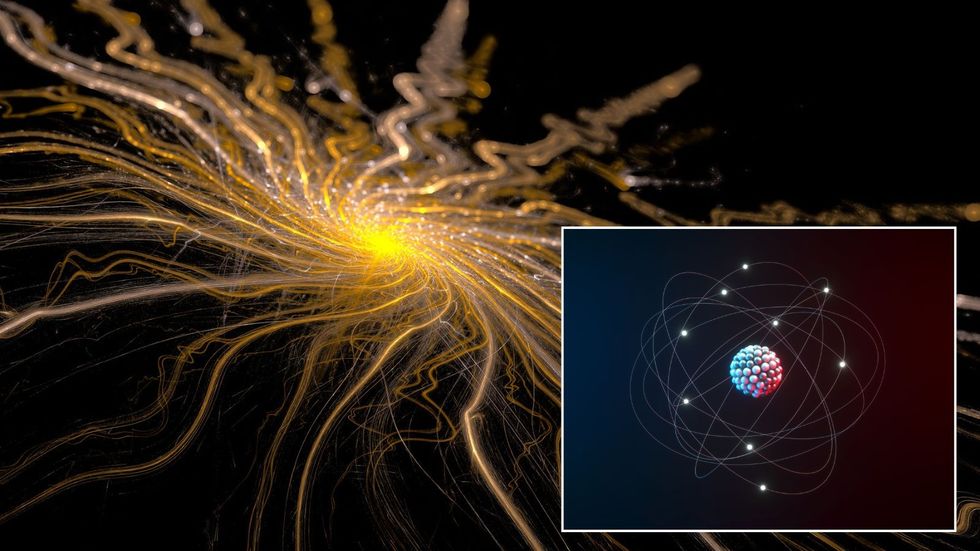Scientific breakthrough as Cern turns lead into gold after colliding atoms at light speed

This remarkable achievement represents a quiet coup for physics
Don't Miss
Most Read
Latest
Scientists at the European Organisation for Nuclear Research (Cern) have achieved what generations of alchemists could only dream of: turning lead into gold.
The feat was accomplished inside the Large Hadron Collider (LHC), the world's most powerful particle accelerator buried beneath the Franco-Swiss border.
The transmutation, detailed in a paper published in Physical Review Journals, occurred when two beams of lead atoms were smashed together at close to the speed of light.
This remarkable achievement represents a quiet coup for physics, though not quite in the way medieval alchemists had hoped.

Scientists at the European Organisation for Nuclear Research (Cern) have achieved what generations of alchemists could only dream of: turning lead into gold
|Getty
As the lead atoms screamed past each other, three protons were jolted from some atoms, transforming them into an entirely different element.
Between 2015 and 2018, this process is estimated to have produced about 86 billion gold atoms.
The transformation occurred through what physicists call "electromagnetic dissociation," where photon bursts cause a lead atom's internal structure to oscillate.
This oscillation results in the ejection of neutrons and protons, with lead (82 protons) losing three protons to become gold (79 protons).
Alas, the total yield amounted to just 29 trillionths of a gram of gold.
Even more disappointing for would-be alchemists, the gold survived only millionths of a second.
LATEST DEVELOPMENTS:
"While the dream of medieval alchemists has technically come true, their hopes of riches have once again been dashed," Cern said in a statement.
The gold particles emerge with very high energy and immediately fragment into single protons, neutrons and other particles upon hitting the LHC casing.
The process relied on "ultra-peripheral collisions," where two charged atoms pass close enough for their electromagnetic fields to interact without directly colliding.
Because the lead nuclei travel at an astonishing 99.999993 per cent of the speed of light, these interactions can cause short-lived pulses of photons to be emitted.

The transmutation, detailed in a paper published in Physical Review Journals, occurred when two beams of lead atoms were smashed together at close to the speed of light
|Getty
A similar phenomenon was observed two decades ago at Cern's second-largest particle collider, the Super Proton Synchrotron.
The LHC's higher energies and sensitive detector called Alice have allowed the gold production to be measured precisely for the first time.
Marco van Leeuwen, a spokesman for the Alice experiment, said: "It is impressive to see that our detectors [are] sensitive to collisions where only a few [particles] are produced, enabling the study of rare electromagnetic 'nuclear transmutation' processes."
For the scientists at Cern, this was a by-product of investigating how photons influence the structure of atomic nuclei.











